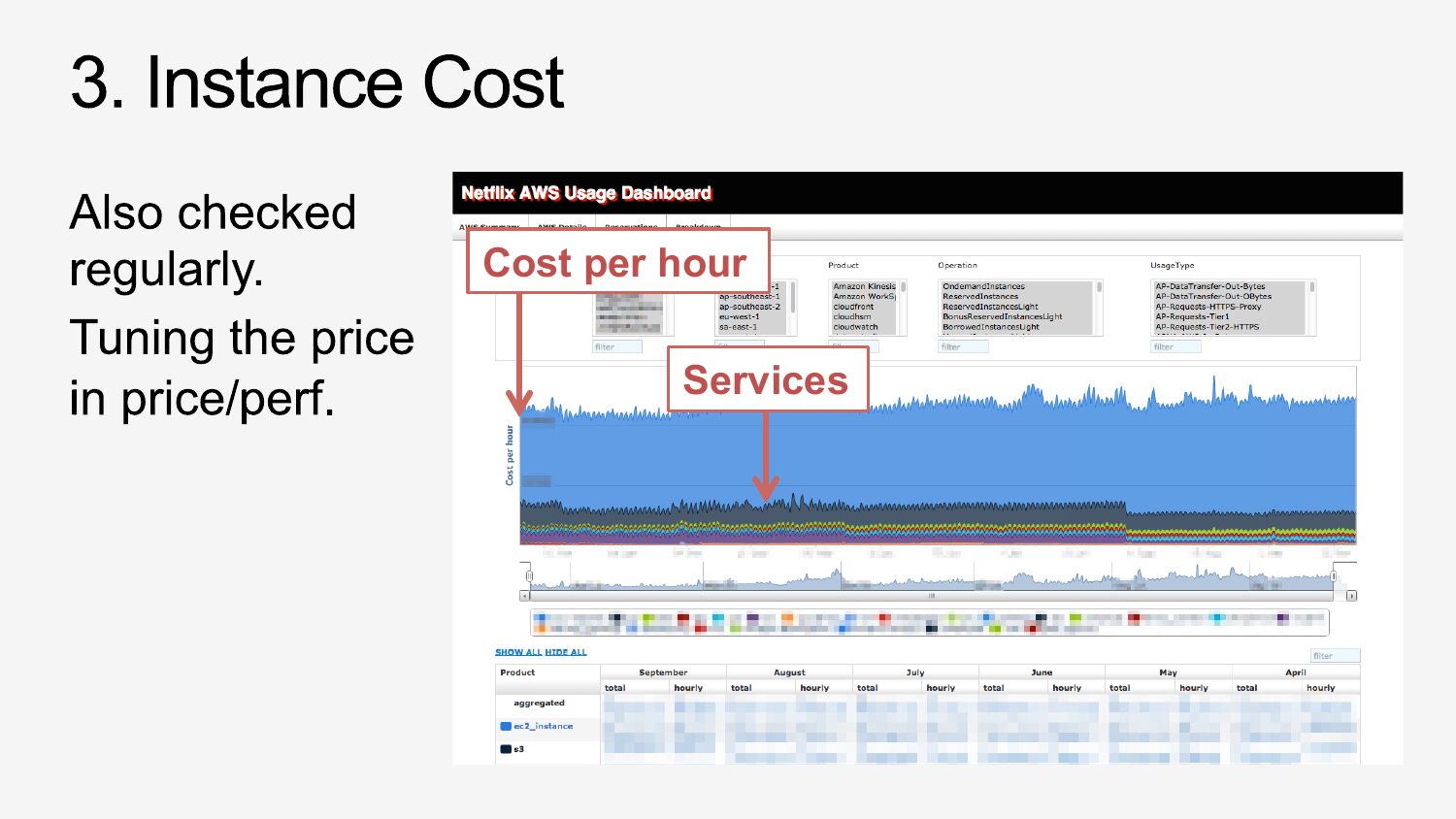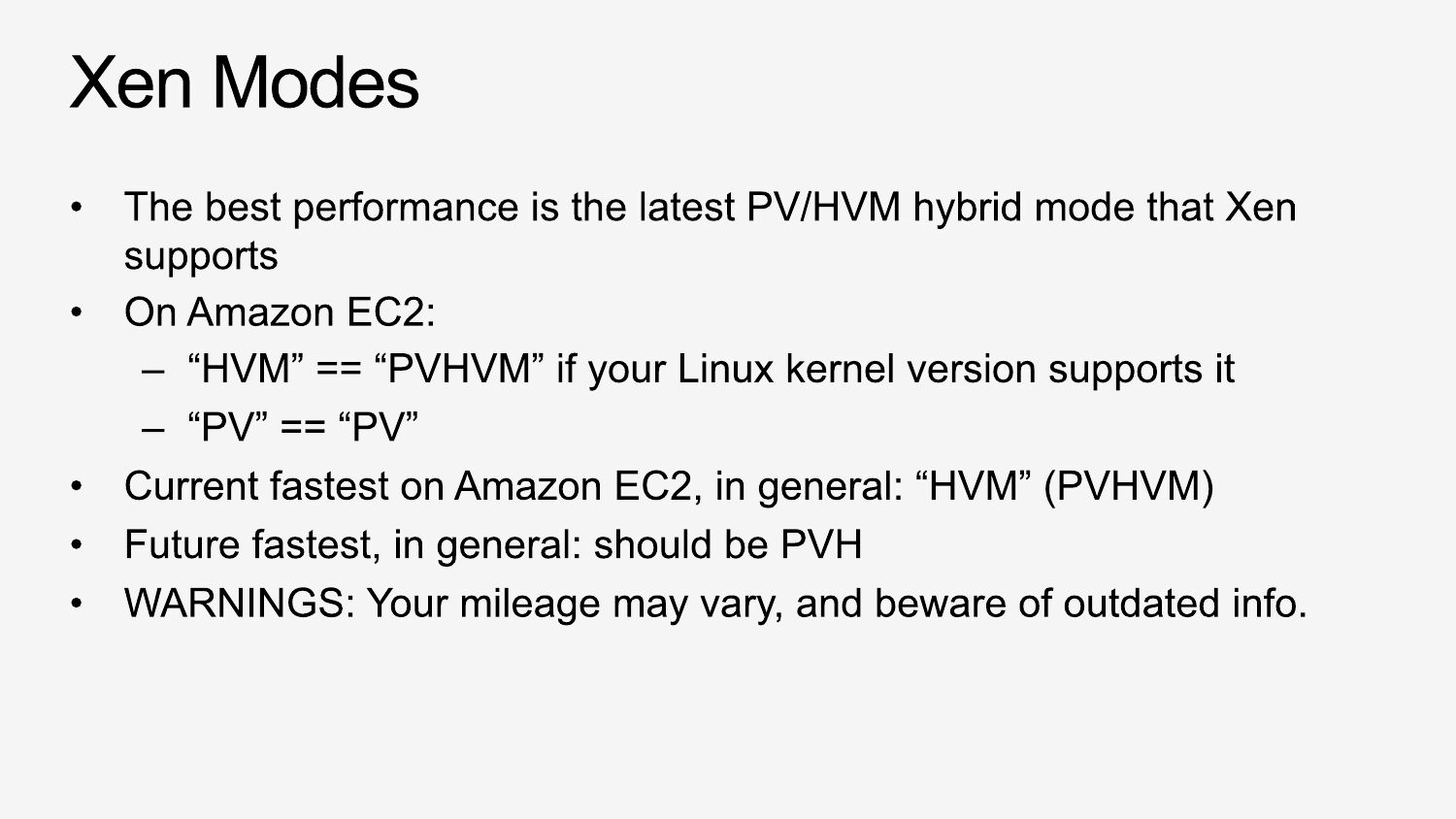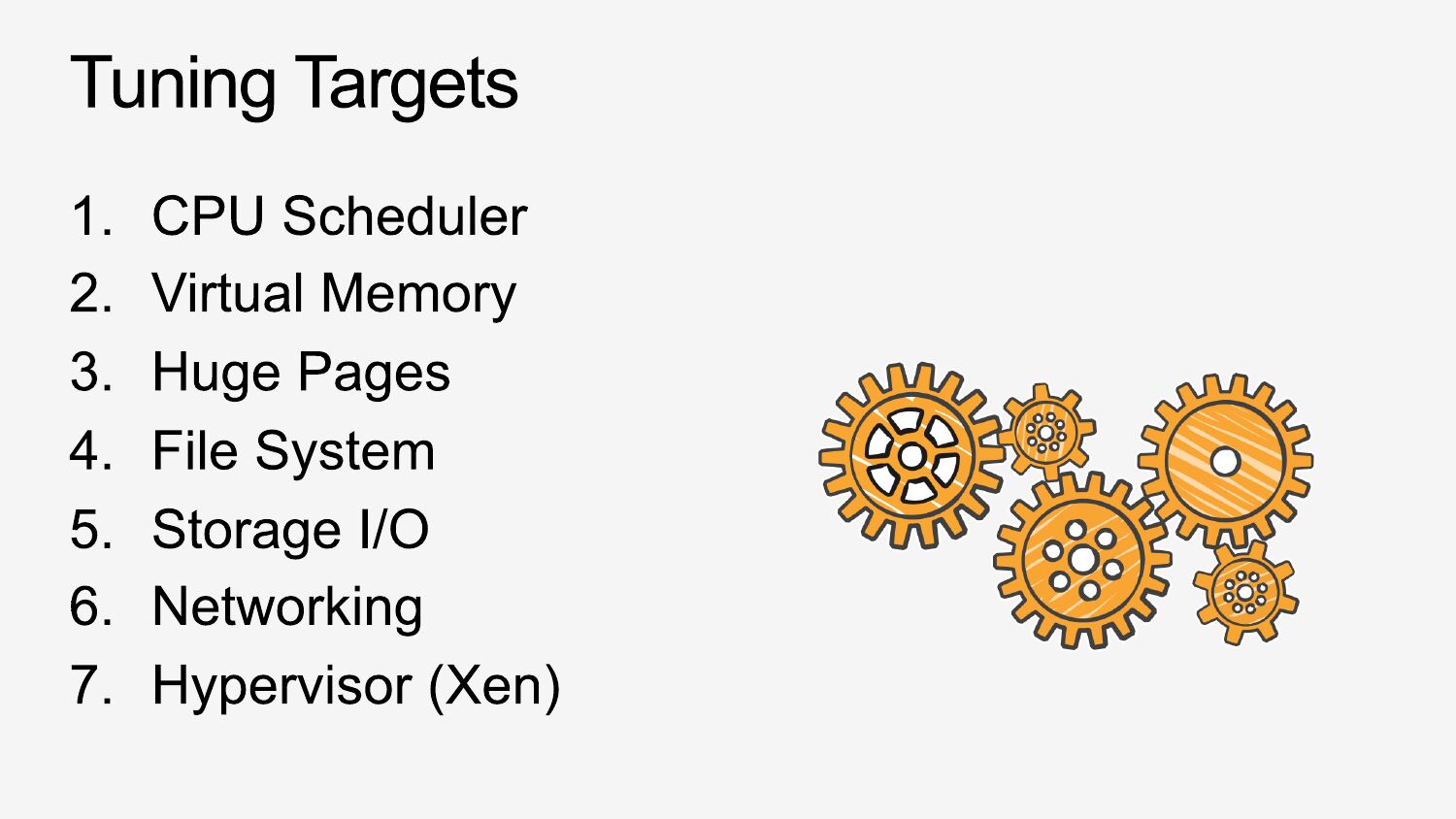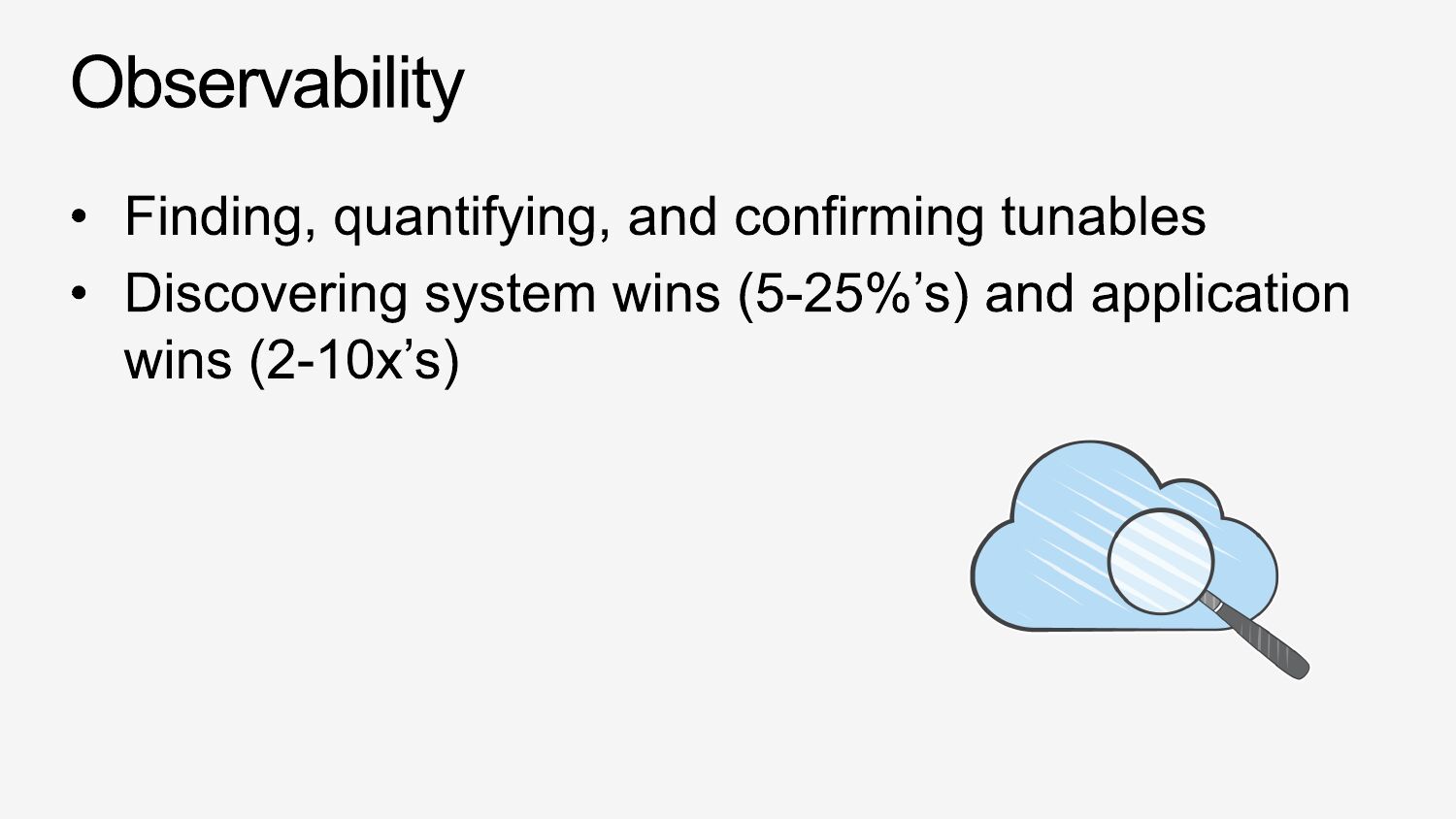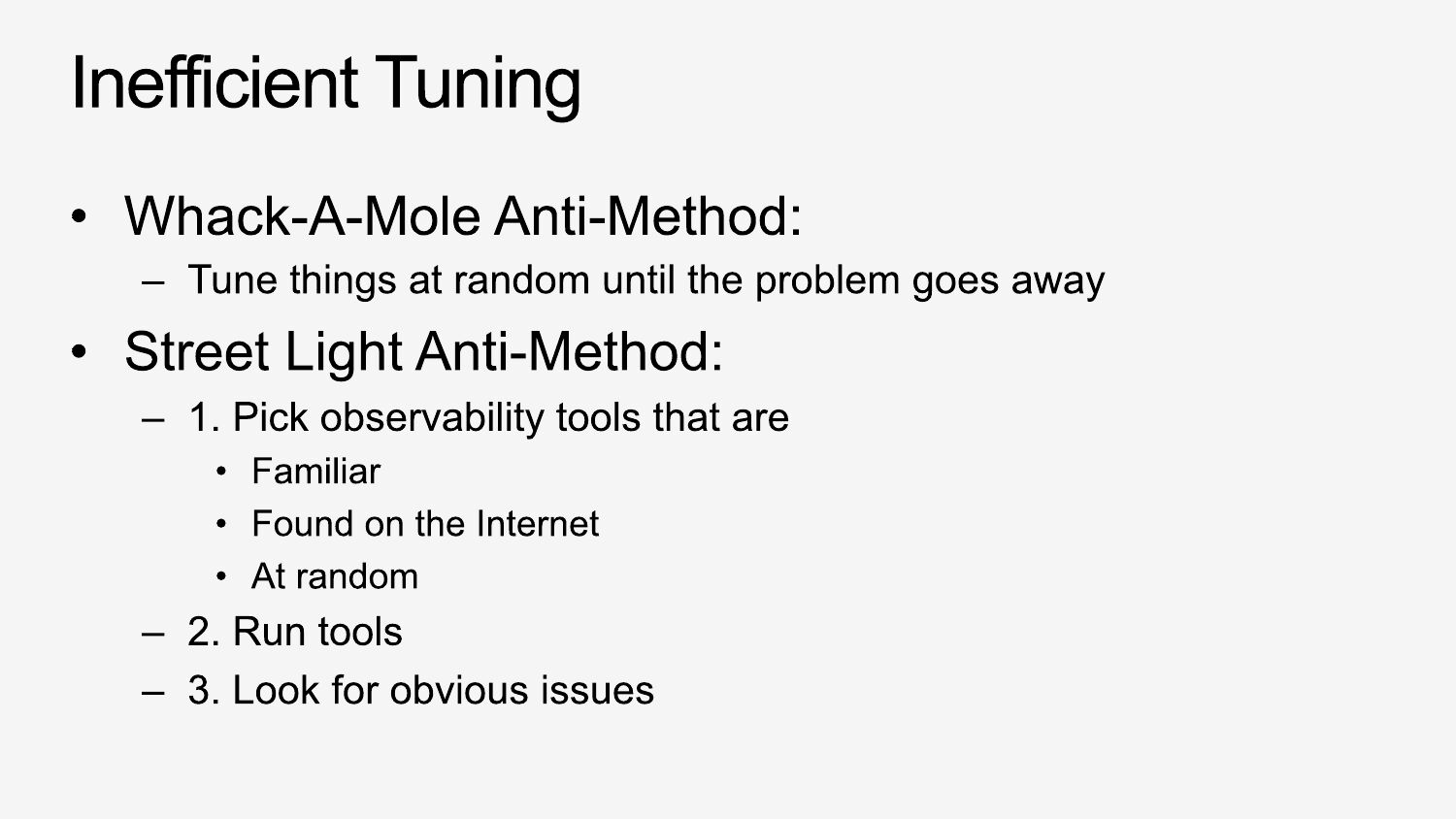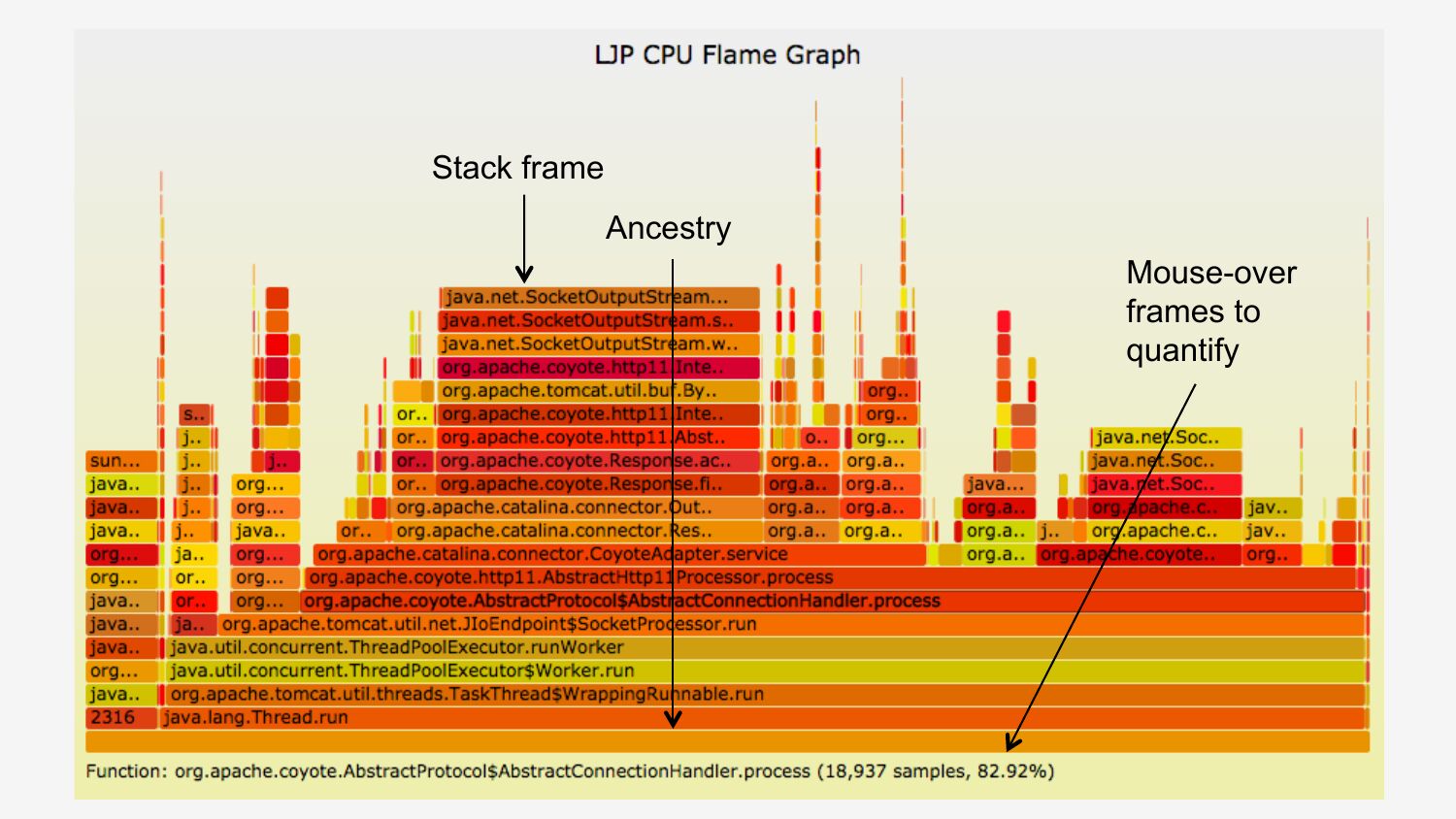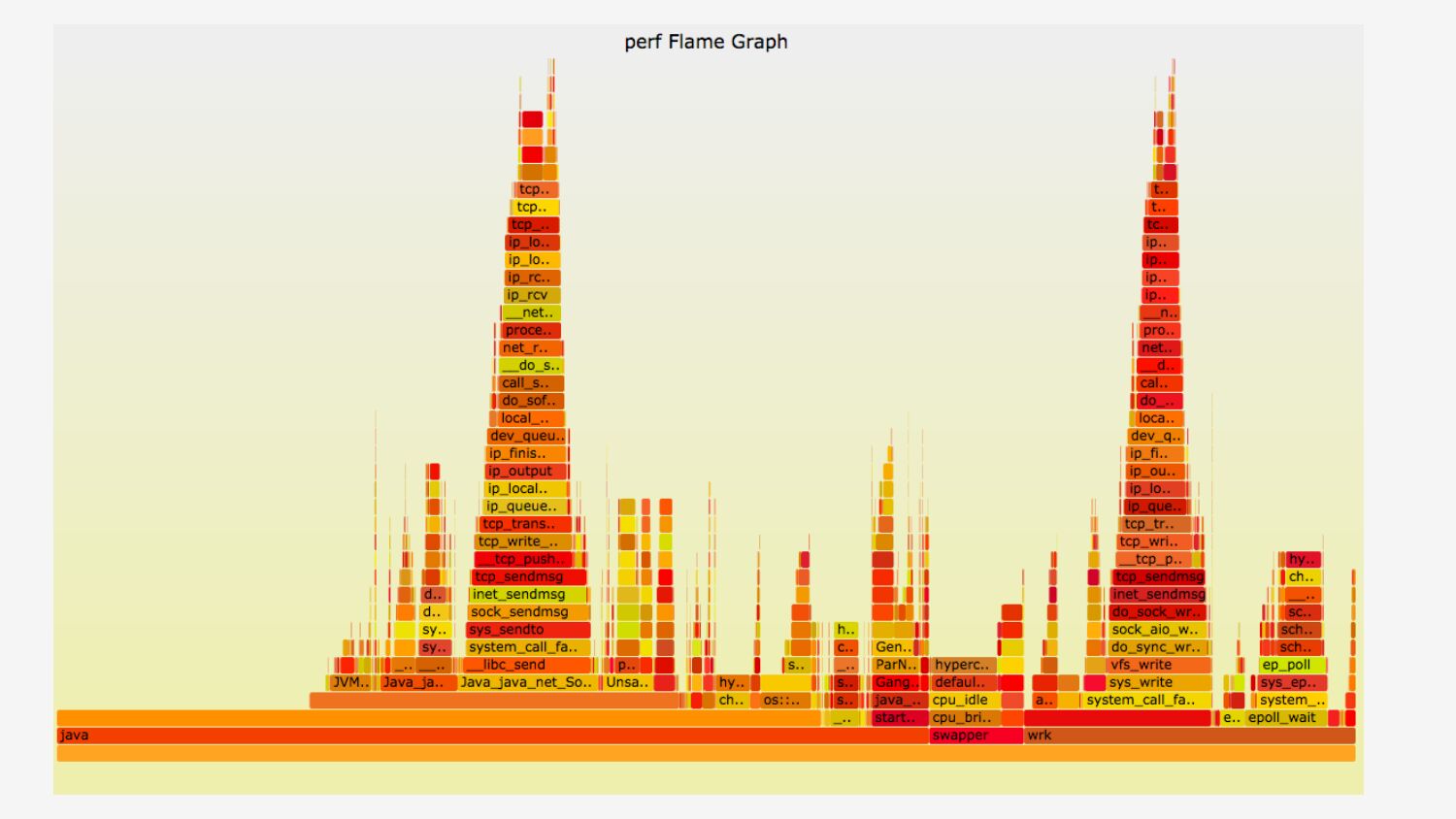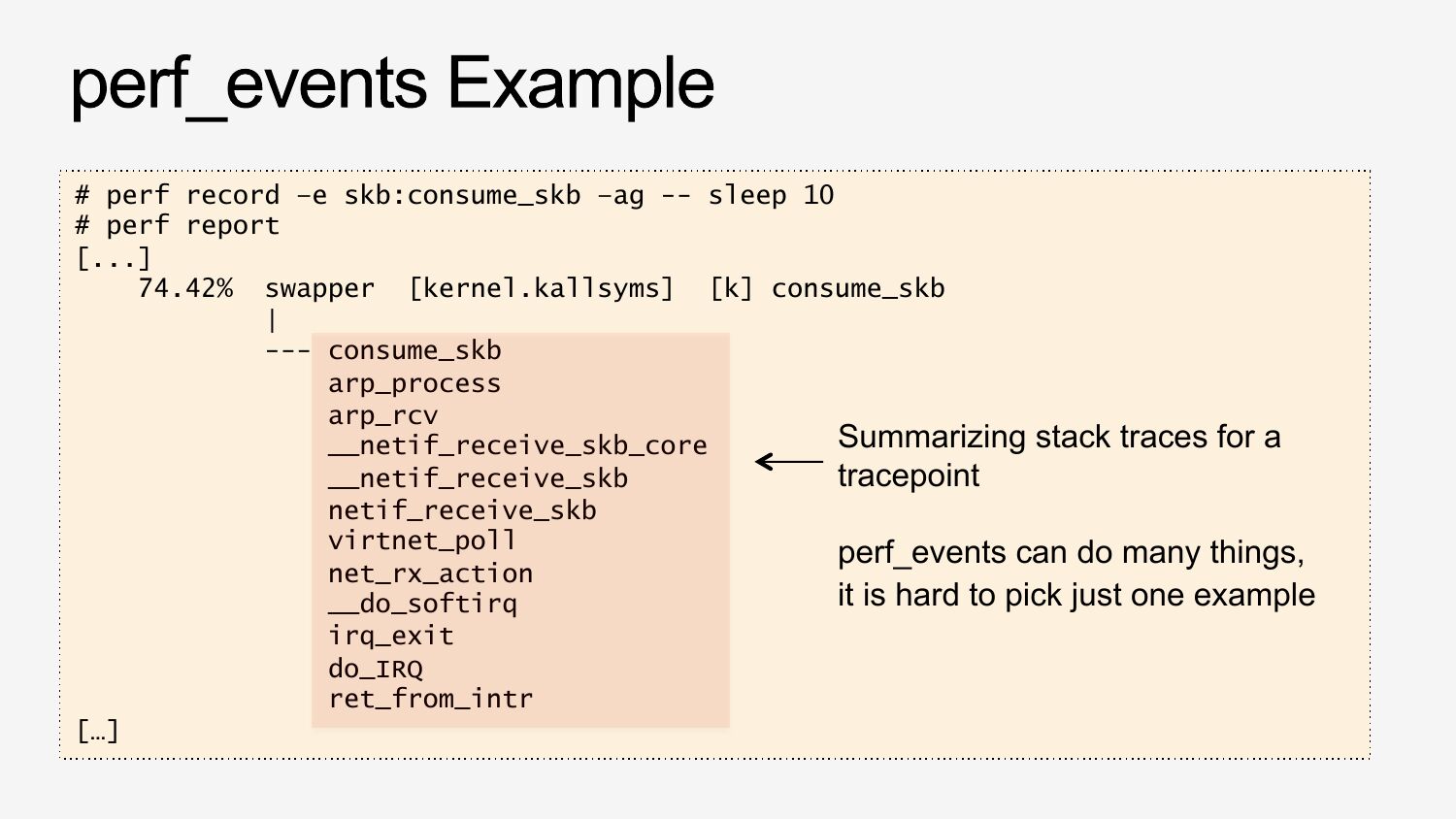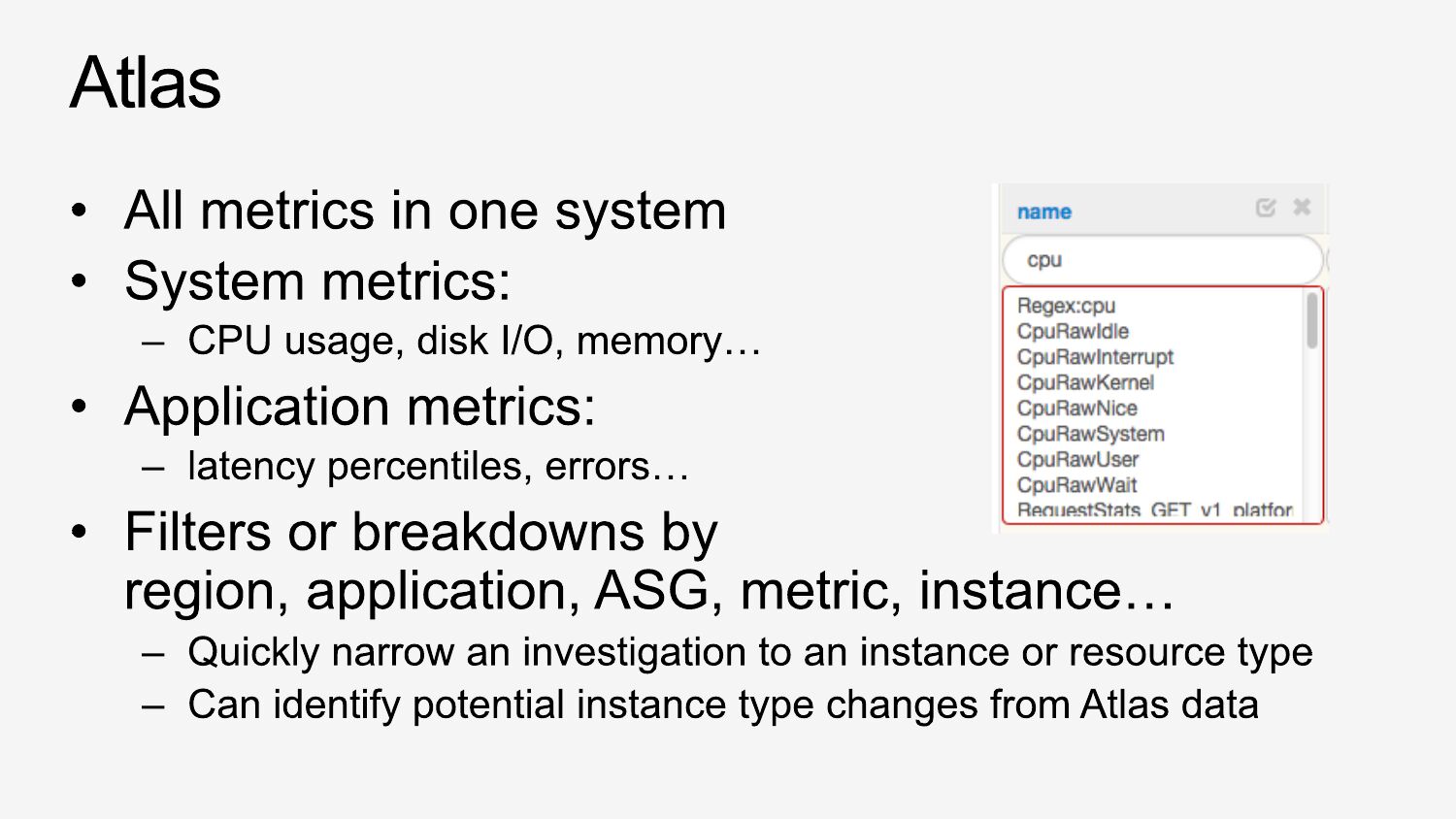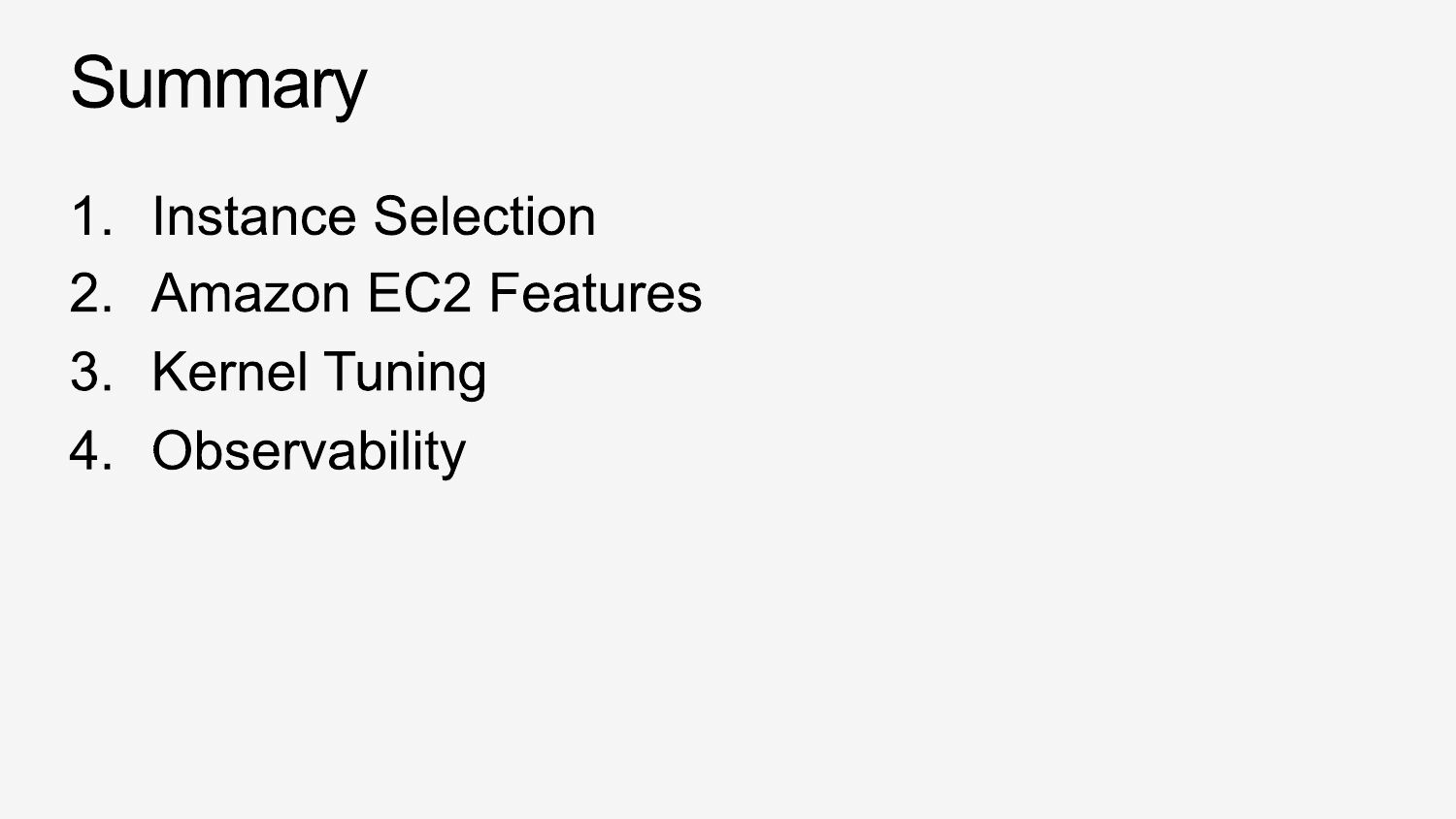AWS re:Invent 2014: Performance Tuning EC2 Instances
Talk for AWS re:Invent 2014 by Brendan Gregg, Netflix.Video: https://www.youtube.com/watch?v=7Cyd22kOqWc
Description: "Netflix tunes Amazon EC2 instances for maximum performance. In this session, you learn how Netflix configures the fastest possible EC2 instances, while reducing latency outliers. This session explores the various Xen modes (e.g., HVM, PV, etc.) and how they are optimized for different workloads. Hear how Netflix chooses Linux kernel versions based on desired performance characteristics and receive a firsthand look at how they set kernel tunables, including hugepages. You also hear about Netflix’s use of SR-IOV to enable enhanced networking and their approach to observability, which can exonerate EC2 issues and direct attention back to application performance."
PDF: AWSreInvent2014_perf_tuning_EC2_nobkg.pdf
Keywords (from pdftotext):
slide 1:
PFC306 Brendan Gregg, Performance Engineering, Netflix November 12, 2014 | Las Vegas, NVslide 2:
slide 3:
slide 4:
slide 5:
slide 6:
slide 7:
slide 8:
slide 9:
EC2 ELB Cassandra Applications (Services) Elasticsearch EVCache SES SQSslide 10:
slide 11:
slide 12:
slide 13:
Start Find best balance Select memory to cache working setslide 14:
ASG Cluster prod1 ELB Canary ASG-v010 ASG-v011 Instance Instance Instance Instance Instance Instanceslide 15:
slide 16:
slide 17:
Select instance families From any desired resource, see types & cost Select resourcesslide 18:
eg, 8 vCPU:slide 19:
slide 20:
slide 21:
Acceptable Headroom Unacceptableslide 22:
slide 23:
slide 24:
slide 25:
slide 26:
Cost per hour Servicesslide 27:
slide 28:
slide 29:
slide 30:
slide 31:
slide 32:
slide 33:
slide 34:
slide 35:
slide 36:
# schedtool –B PIDslide 37:
vm.swappiness = 0 # from 60slide 38:
# echo never >gt; /sys/kernel/mm/transparent_hugepage/enabled # from madviseslide 39:
vm.dirty_ratio = 80 # from 40 vm.dirty_background_ratio = 5 # from 10 vm.dirty_expire_centisecs = 12000 # from 3000 mount -o defaults,noatime,discard,nobarrier …slide 40:
/sys/block/*/queue/rq_affinity /sys/block/*/queue/scheduler /sys/block/*/queue/nr_requests /sys/block/*/queue/read_ahead_kb mdadm –chunk=64 ... noopslide 41:
net.core.somaxconn = 1000 net.core.netdev_max_backlog = 5000 net.core.rmem_max = 16777216 net.core.wmem_max = 16777216 net.ipv4.tcp_wmem = 4096 12582912 16777216 net.ipv4.tcp_rmem = 4096 12582912 16777216 net.ipv4.tcp_max_syn_backlog = 8096 net.ipv4.tcp_slow_start_after_idle = 0 net.ipv4.tcp_tw_reuse = 1 net.ipv4.ip_local_port_range = 10240 65535 net.ipv4.tcp_abort_on_overflow = 1 # maybeslide 42:
echo tsc >gt; /sys/devices/system/clocksource/clocksource0/current_clocksourceslide 43:
slide 44:
slide 45:
slide 46:
slide 47:
Resource Utilization (%)slide 48:
slide 49:
slide 50:
slide 51:
Application System Libraries System Calls Kernel Devicesslide 52:
slide 53:
slide 54:
$ sar -n TCP,ETCP,DEV 1 Linux 3.2.55 (test-e4f1a80b) rxpck/s 08/18/2014 09:10:43 PM 09:10:44 PM 09:10:44 PM IFACE eth0 txpck/s 09:10:43 PM 09:10:44 PM active/s passive/s 09:10:43 PM 09:10:44 PM […] atmptf/s _x86_64_ (8 CPU) rxkB/s txkB/s rxcmp/s txcmp/s 4537.46 28513.24 iseg/s oseg/s estres/s retrans/s isegerr/s orsts/s rxmcst/sslide 55:
slide 56:
slide 57:
slide 58:
slide 59:
Stack frame Ancestry Mouse-over frames to quantifyslide 60:
# git clone https://github.com/brendangregg/FlameGraph # cd FlameGraph # perf record -F 99 -ag -- sleep 60 # perf script | ./stackcollapse-perf.pl | ./flamegraph.pl >gt; perf.svgslide 61:
slide 62:
Kernel TCP/IP Broken Java stacks (missing frame pointer) Locks epoll Time Idle threadslide 63:
slide 64:
slide 65:
# ./iosnoop –ts Tracing block I/O. Ctrl-C to end. STARTs ENDs COMM 5982800.302061 5982800.302679 supervise 5982800.302423 5982800.302842 supervise 5982800.304962 5982800.305446 supervise 5982800.305250 5982800.305676 supervise […] PID TYPE DEV 202,1 202,1 202,1 202,1 BLOCK BYTES LATms # ./iosnoop –h USAGE: iosnoop [-hQst] [-d device] [-i iotype] [-p PID] [-n name] [duration] -d device # device string (eg, "202,1) -i iotype # match type (eg, '*R*' for all reads) -n name # process name to match on I/O issue -p PID # PID to match on I/O issue # include queueing time in LATms # include start time of I/O (s) # include completion time of I/O (s) […]slide 66:
slide 67:
# perf record –e skb:consume_skb –ag -- sleep 10 # perf report [...] 74.42% swapper [kernel.kallsyms] [k] consume_skb --- consume_skb arp_process arp_rcv Summarizing stack traces for a __netif_receive_skb_core tracepoint __netif_receive_skb netif_receive_skb virtnet_poll perf_events can do many things, net_rx_action it is hard to pick just one example __do_softirq irq_exit do_IRQ ret_from_intr […]slide 68:
slide 69:
ec2-guest# ./showboost CPU MHz : 2500 Turbo MHz : 2900 (10 active) Turbo Ratio : 116% (10 active) CPU 0 summary every 5 seconds... TIME 06:11:35 06:11:40 06:11:45 [...] C0_MCYC C0_ACYC Real CPU MHz UTIL 51% 50% 49% RATIO 116% 115% 115% MHzslide 70:
slide 71:
slide 72:
Region Breakdowns App Interactive Graph Metrics Options Summary Statisticsslide 73:
slide 74:
slide 75:
Utilization Per device Breakdowns Saturation Errorsslide 76:
slide 77:
slide 78:
http://aws.amazon.com/ec2/instance-types/ http://docs.aws.amazon.com/AWSEC2/latest/UserGuide/instance-types.html http://docs.aws.amazon.com/AWSEC2/latest/UserGuide/enhanced-networking.html http://www.slideshare.net/cpwatson/cpn302-yourlinuxamioptimizationandperformance http://www.brendangregg.com/blog/2014-09-27/from-clouds-to-roots.html http://www.brendangregg.com/blog/2014-05-07/what-color-is-your-xen.html http://www.brendangregg.com/linuxperf.html http://www.slideshare.net/brendangregg/linux-performance-tools-2014 http://www.brendangregg.com/USEmethod/use-linux.html http://www.brendangregg.com/blog/2014-06-12/java-flame-graphs.html https://github.com/brendangregg/FlameGraph https://github.com/brendangregg/perf-toolsslide 79:
slide 80:
Talk Time Title PFC-305 Wednesday, 1:15pm Embracing Failure: Fault Injection and Service Reliability BDT-403 Wednesday, 2:15pm Next Generation Big Data Platform at Netflix PFC-306 Wednesday, 3:30pm Performance Tuning EC2 DEV-309 Wednesday, 3:30pm From Asgard to Zuul, How Netflix’s proven Open Source Tools can accelerate and scale your services ARC-317 Wednesday, 4:30pm Maintaining a Resilient Front-Door at Massive Scale PFC-304 Wednesday, 4:30pm Effective Inter-process Communications in the Cloud: The Pros and Cons of Micro Services Architectures ENT-209 Wednesday, 4:30pm Cloud Migration, Dev-Ops and Distributed Systems APP-310 Friday, 9:00am Scheduling using Apache Mesos in the Cloudslide 81:



























